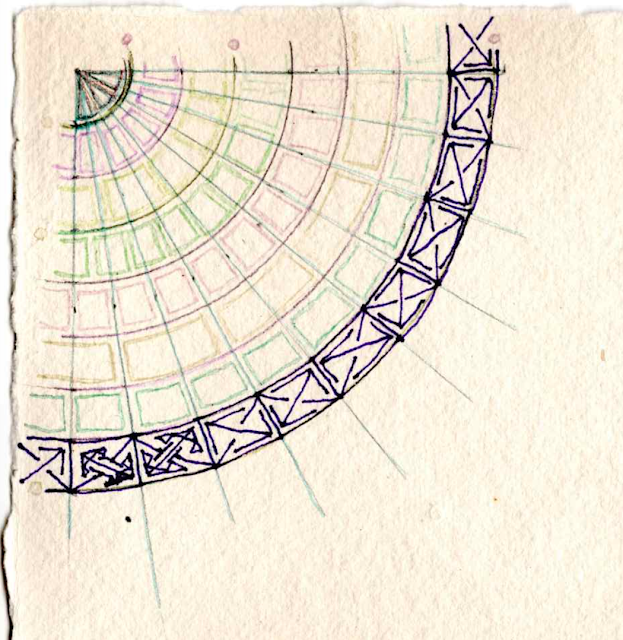Three pears on a windowsill - 2025 04 10
Graphite, pencil crayon, soft pastel, chalk, erasure on mylar - 9" x 12 "
I walked to the local grocery store and purchased a collection of pears to serve as my still life models. My creative works are scaled to my available resources for time, space, materials and technique.
Ellen Dissanayake, in her book, 'What is Art For?' argued for a biobehavioral view of our human activity of making creative works. This view demonstrates an enactive relationship between behaviours that contribute to species success (imagination, teachability, pro-social leadership) and genetic evolution. For example a tribe of humans that are able to respond to difficulty with imagination, learn new techniques and follow new leadership are going to be more successful at reproduction than a tribe that lacks imagination, is unable to adapt to changing conditions, and follow toxic, anti-social leadership.
I am working from home, looking after my frail, elder Mom. My days and time are tied to her needs for support in every aspect of her life. I have carved out an art-making studio that allows me to make works suited to my surroundings - small drawings that can be completed in layers over time, that require minimal storage space and that are easily shared on magnet boards for quick removal.
The capacity and capability to exercise imagination, learning and empathy will contribute to evolutionary sustainability.
The subjects of my drawings are objects and life around me. The neighbourhood crows I encounter on my daily dog walks. The neighbourhood cats lounging on porches and sidewalks. My own dogs giving me an intimate, nuanced glimpse into their inner lives through drawing their portraits. The bulbous bodies and inquiring stems of pears to create still life tableau that serve as a metaphor for my life.
Dissanayake cites the work of Edward O. Wilson, in his book 'Sociobiology: The New Synthesis' (1975) to make the connection between biological evolutionary success and sociological evolutionary success. Social behaviour, our dealings with each other, are influenced by genes that delineate a range of adaptive behaviours.
The window sill is a liminal space that transitions inside life to the outside world and brings outside life indoors. The pears sit on the window sill, poised between the safety, warmth and comfort of home, and the unknown uncertainty of wilderness and nature.
Wilson postulated that habitat (our surroundings) and behaviour (our way of life) are interdependent. Each type of habitat influences our capacity and capability to adopt certain behaviours.
The image is built up over many layers of graphite, pencil crayons and soft pastels. The process of additive layers is augmented with subtractive methods - using an eraser to remove colour and allow more light through the translucent mylar substrate.
Our behaviours evolve to survive changes in habitat. Our behaviours also cause changes in our habitat, to some degree (for example, the kinds of housing we develop to survive climate change).
In this drawing, two of the pears are looking directly outside. Something outside has attracted their attention. The third pear appears to be looking at the other two pears. It has not seen what they are looking at, it is noticing that they are looking at something outside.
The selective pressure of our surroundings produce behaviours and bodies best suited to survive.
Making the drawing helps me to make sense of my experience of the continuous rolling wave of catastrophic system collapse I am encountering on a daily basis. What is revealed in the drawing is an instruction: "Look outside. Pay attention."
This approach to art-making; our need to make creative works to help us understand our experience, to make meaning, to formulate a response and to work together to achieve shared objectives, helps us understand how our investments in our creative works contribute to evolutionary success.
The drawing started with layers of blue, green and yellow. As it progressed, tints of warm red and orange were added. These warm colours add intensity and a sense of heat coming through the window - is there a fire? Is it a drought? How warm will it get?
Our capacity and capability to make art helps us survive and thrive within changing conditions.
Coincidentally, I have been writing a song about the Old Lytton Fire of 2021. The fire was started by a spark the day after Lytton recorded the highest temperature ever recorded in Canada. The fire destroyed 90 percent of the Village of Lytton. The Insurance Bureau of Canada reported $78 million of insured damage.
This little drawing of three pears on a window sill gives me insight into the changing circumstances of my personal evolution and an opportunity for social connection when I share the work.
My modest creative work builds strength in my household and my social circles.
Dissanayake, E. (1995). What is art for? (3. print). Univ. of Washington Pr.




Comments
Post a Comment